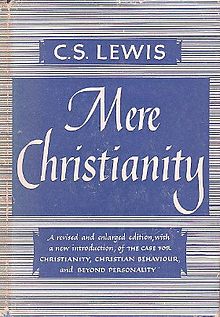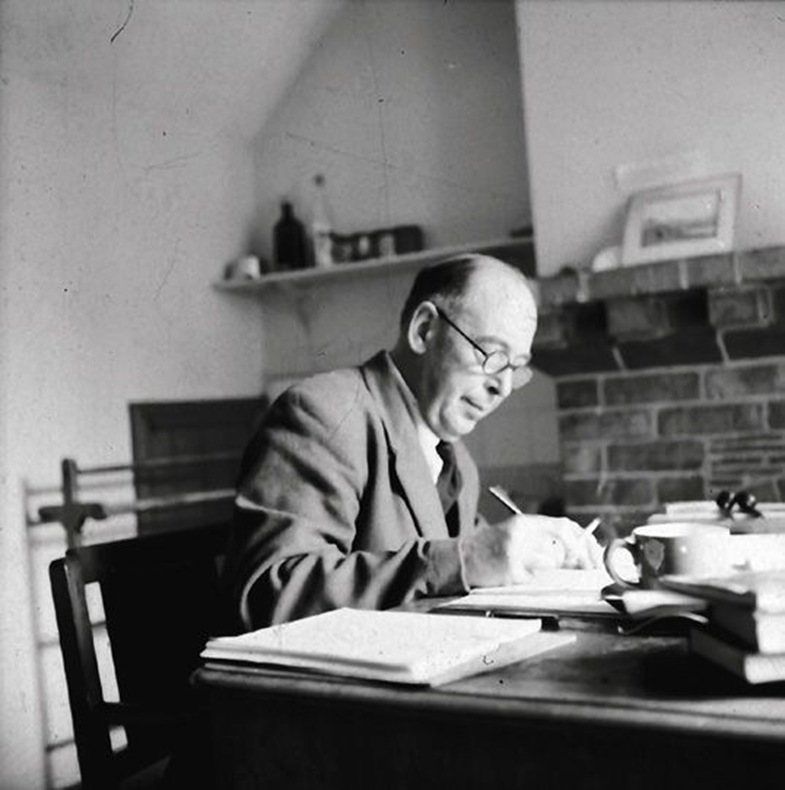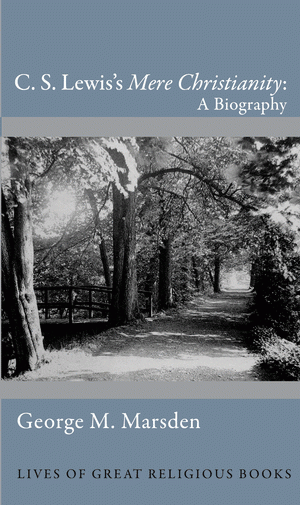George M. Marsden, professor of history emeritus at the University of Notre Dame, is one of the most influential historians of Christianity in the twentieth century—particularly when it comes to evangelicalism and fundamentalism and higher education. To name just two of his volumes, Fundamentalism and American Culture (Oxford University Press, 1980; 2nd ed., 2006) is widely considered a landmark contribution to the field, and his biography of Jonathan Edwards: A Life (Yale University Press, 2003) won Columbia University’s prestigious Bancroft Prize.
His latest book, due out next week from Princeton University Press, is C. S. Lewis’s “Mere Christianity”: A Biography, part of their Lives of Great Religious Books series.
Professor Marsden answered some questions about the genre of the book, his background with the works of Lewis, how the BBC came to broadcast religious talks and how they became books, why the book has had such staying power and influence, and what he’s working on next.
What is “reception history,” and how is this work a form of it?
“Reception history” is simply the history of how a book was received over the years. This Princeton University Press series on “the Lives of Great Religious Books” is to present “biographies” of books. So the life of a book involves both its origins and the story of how it has been received and interpreted over the years.
You write in the book that you were not influenced at an early age by Mere Christianity, as so many Christians in the academic world have been. Can you tell us a bit about your own relationship to Lewis’s work?
In the early 1950s, when I was a boy, my father (who was an Orthodox Presbyterian minister) suggested that I read The Screwtape Letters. I enjoyed that and was impressed that such a well-educated writer still believed in the supernatural beings. But I don’t remember encountering Mere Christianity before I was in my twenties. Then I would run into other young Christians who were very enthusiastic about it and others of Lewis’s works. I cannot remember when I first read Mere Christianity and, although I had a good impression of it and others of Lewis’s works, I do not think I read Mere Christianity very carefully. But I was well aware of its soaring reputation. So when, Fred Appel, the Princeton editor, asked me if I wanted to contribute to his series, I suggested writing on that. I had written a couple of books on Jonathan Edwards, and I was looking for a subject that would be similarly inspiring to work on. And I was well rewarded. Almost everything of Lewis is edifying and a pleasure to read.
 For Americans in the 21st century, it may be perplexing to know that the origin of this work was as radio addresses for the British Broadcasting Company. How did it come about that a Christian professor was able to give unabashed talks on the truth of Christianity over the public airwaves?
For Americans in the 21st century, it may be perplexing to know that the origin of this work was as radio addresses for the British Broadcasting Company. How did it come about that a Christian professor was able to give unabashed talks on the truth of Christianity over the public airwaves?
That is an interesting aspect of the origins of the book. The BBC was a noncommercial company serving the British people under a royal charter. It included a substantial religious dimension. Great Britain was officially a Christian nation, and the company leadership took that more seriously than did most of the British public. For instance, until World War II, Sunday programming not only included church services and religious programs, but also had to be tasteful, so that there was no jazz or comedy shows on Sundays. During the war, when the BBC had a monopoly on broadcasting, those rules were relaxed a bit for the sake of the troops. But the religion department oversaw quite a few weekday religious programs as well as Sunday broadcasts. Lewis fit their purposes well. Because of the war, they did not want anything controversial. And Lewis’s talks could be of interest to people of all sorts of Christian backgrounds.
If my chronology is correct, there were four series of talks delivered by Lewis over the course of a year: (1) a series of four 15-minute talks (plus a response to listeners’ objections) from August to September of 1941; (2) a series of five 15-minute talks from January to February of 1942; and (3) a series of eight 10-minute talks from September to November of 1942; and (4) a fourth and final series of seven 15-minute talks from February to April 1944. From there, how did they reach publication form, culminating in Mere Christianity? How much did the material change from the original radio manuscript to the final edition?
 Lewis had the first two sets of talks published in a little paperback called simply Broadcast Talks [1942]. (In the American edition that soon followed it had the more engaging title, The Case for Christianity [1943].)
Lewis had the first two sets of talks published in a little paperback called simply Broadcast Talks [1942]. (In the American edition that soon followed it had the more engaging title, The Case for Christianity [1943].)
Then he published the third and fourth sets of talks as additional paperbacks, Christian Behaviour [1943] and Beyond Personality [UK: 1944, US: 1945]. He edited the broadcasts for publication and added a number of extra chapters, especially in Christian Behaviour.
When he finally put these together as Mere Christianity in 1952, he did just some minor editing and added a very important new preface that explained what he meant by “Mere Christianity.” I try to identify all the substantial changes in an appendix.
[Note: you can listen below to Lewis’s final BBC recording, the only audio from the entire series to have survived.]
I know that the ultimate answer to the following question is “read the book to find out!” but as a preview, could you tell us why you think this book in particular has such enduring “life” or “vitality” (to use your descriptions)?
One of the most remarkable aspects of the life of this book is that, even though it was not originally designed to be a single book, it had maintained its vitality far better than most other books of its time. Remarkably, it has sold quite a bit better in the twenty-first century than it did in Lewis’s day, when it already sold well. It has sold over three and a half million copies in English alone. So one major question I try to answer in my book is: what accounts for its unusual lasting vitality? It helps that Lewis always looked for timeless truths, as the idea of “Mere Christianity” (or the beliefs that almost all Christians have shared through the ages) illustrates. So the book is less dated than most books. Also Lewis was a brilliant communicator. He listened to how ordinary people talked and then translated his views into language they could understand. And even though he uses lots of arguments he always puts these in imaginative contexts that make them come alive. So he uses many more vivid analogies and metaphors than do most non-fiction writers. And he acts as a friendly companion and guide on a journey that he himself has taken from unbelief to belief. At the same time he does not draw attention to himself but leads the reader to see the challenging beauty of the core Christian message.

Can you tell us any future projects you are working on now?
I have been working on the renaissance of evangelical Christian thought of recent decades. If one goes back to the mid-twentieth century, there was not much in the line of first-rate evangelical thought in most fields. As late as the early 1990s Mark Noll could lament The Scandal of the Evangelical Mind. Today we have one of the richest intellectual communities that there is. So I’m seeing if I can tell the story of that transformation. I’ll have to see how that goes.


















